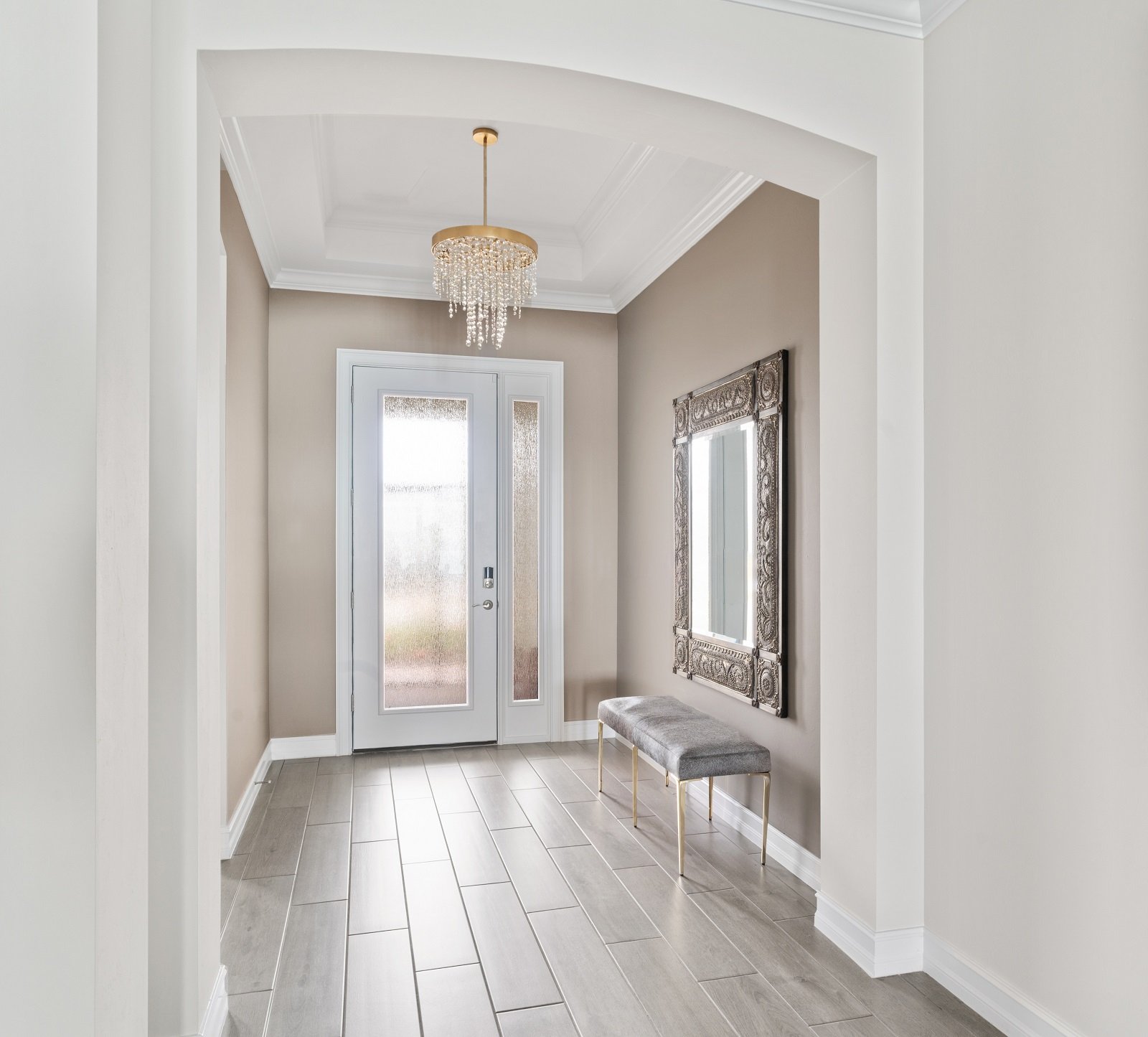Chandelier Heights in Your Home
Determining the appropriate placement of chandeliers within your home is essential, and it's a collaborative process between the homeowner and the interior designer. Placing chandeliers at the right height is not just about aesthetics and functionality; it's also about bringing your unique vision for your space to life. Chandeliers can be stunning focal points in a room, so getting their height right is important. To help you get started, here's an essential guide.
Consider the Room
The height at which you hang a chandelier depends on the size and purpose of the room. For instance, in a dining room, you should place the chandelier low enough to light up the table without obstructing the view or conversation. On the other hand, in a foyer or entryway, hang the chandelier higher to create a grand entrance.
Hanging the chandelier around 30 to 36 inches above the table surface is usually recommended for dining rooms. This ensures even light distribution and prevents it from glaring into diners' eyes. However, you should adjust this height based on the fixture's size and ceiling height.
In addition, hanging pendants over a bar or island remember to allow for ample headroom. Generally, pendant lights should be 28–36 inches above the countertop of a kitchen island. This height will enable people to move around the island comfortably and prevent the tallest people in the household from hitting their heads on the pendant.
The ideal height depends on the kitchen's ceiling height. For example, if the ceiling is 8 feet high, the fixtures should be about 30 inches above the island counter. If the ceiling is 9 feet high, the fixtures can be 32–42 inches above the island counter. However, the size and height of the ceilings are all factors to consider.
In entryways or foyers with standard 9-foot ceilings, consider hanging the chandelier around 8 feet above the floor. If you have higher ceilings, you can hang them higher but maintain a visually appealing proportion between the chandelier and the space below it.
The height can vary more for living rooms and bedrooms, where chandeliers are often used for ambient rather than task lighting. Aim for a height that provides adequate illumination while maintaining balance with the room's furnishings and layout.
Your Ceiling Heights are Super Important
When hanging a chandelier, the height of your ceiling is an essential factor to consider. If you have a room with a high ceiling, you should hang the chandelier lower to make it look cohesive and to prevent it from appearing lost in the space. On the other hand, hanging the chandelier too low can make the room feel cramped if you have a room with a low ceiling. The key is to achieve visual balance so that it feels like an integral part of the room's design. Before finalizing the installation, experiment with different heights to find the perfect balance.
Always ensure that the chandelier is securely anchored to the ceiling and that a licensed electrician correctly installs the electrical wiring. Also, consider the height of the door swings and any potential obstructions, especially in foyers.
By considering the height of your chandelier in every room of your home, you can significantly enhance the overall atmosphere and usefulness of the space. A strategically placed chandelier can contribute to a sense of sophistication and fashion and become your room's genuine focal point. Use your imagination and personal taste to guide you in selecting the perfect chandelier for your home.
Looking for more guidance? Schedule a Design Consultation.



